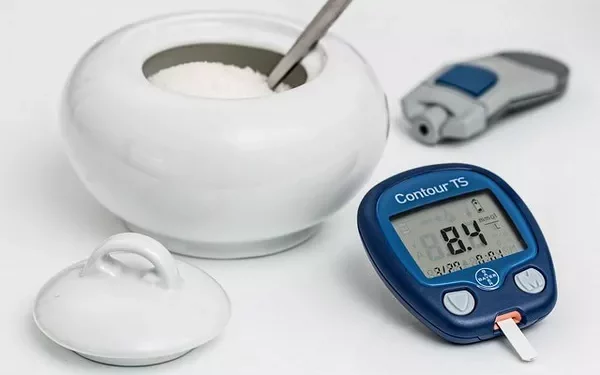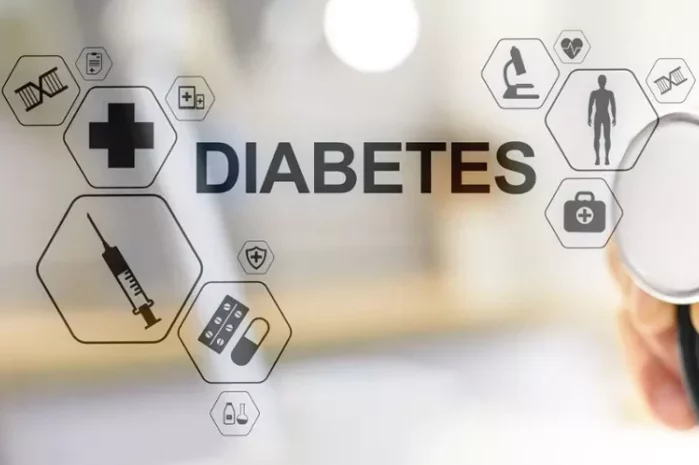Diabetes is one of the most prevalent chronic conditions worldwide, affecting millions of people across various age groups. One of the critical aspects of managing diabetes involves monitoring blood glucose levels regularly to ensure they stay within a healthy range. Understanding what glucose numbers indicate a diabetic state is essential for both patients and healthcare providers. This article will explore the different glucose monitoring methods, the criteria used to diagnose diabetes, and the implications of different glucose levels.
What Is Blood Glucose and Why Is It Important?
Blood glucose refers to the amount of glucose (sugar) in the bloodstream. Glucose is the body’s primary source of energy, fueling everything from muscle movements to brain function. However, when blood glucose levels become too high or too low, it can result in health complications.
How the Body Regulates Blood Glucose
The regulation of blood glucose is primarily managed by the hormone insulin, which is produced by the pancreas. After eating, the body breaks down carbohydrates into glucose, which enters the bloodstream. Insulin helps cells absorb glucose for energy, while excess glucose is stored in the liver and muscles. When the body cannot produce enough insulin (as in Type 1 diabetes) or when the cells become resistant to insulin (as in Type 2 diabetes), blood glucose levels can rise to dangerous levels.
The Different Types of Diabetes
There are two main types of diabetes: Type 1 and Type 2, both of which affect blood glucose regulation, though in different ways.
Type 1 Diabetes
Type 1 diabetes is an autoimmune condition in which the immune system attacks the insulin-producing cells in the pancreas. As a result, individuals with Type 1 diabetes produce little to no insulin, making them dependent on insulin therapy to manage blood glucose levels.
Type 2 Diabetes
Type 2 diabetes occurs when the body becomes resistant to insulin or when the pancreas cannot produce enough insulin to maintain normal blood glucose levels. It is more common in adults but is increasingly being diagnosed in children due to rising obesity rates.
Gestational Diabetes
Gestational diabetes occurs during pregnancy and typically resolves after delivery. However, it can increase the risk of developing Type 2 diabetes later in life for both the mother and child.
Blood Glucose Monitoring: Why It’s Crucial
Regular blood glucose monitoring is essential for individuals with diabetes to prevent complications such as:
- Hypoglycemia (low blood sugar)
- Hyperglycemia (high blood sugar)
- Long-term complications like retinopathy, nephropathy, neuropathy, and cardiovascular disease.
Diabetes can often be asymptomatic in its early stages, which is why monitoring is critical to detect and address abnormal glucose levels before symptoms develop.
What Is a Normal Glucose Level?
Before discussing what glucose number is considered diabetic, it’s important to understand what constitutes a normal blood glucose level. Blood glucose levels fluctuate throughout the day, depending on factors such as food intake, physical activity, and medications.
Fasting blood glucose (FBG): Measured after not eating or drinking anything except water for at least 8 hours.
- Normal: Below 100 mg/dL (5.6 mmol/L)
- Prediabetes: 100–125 mg/dL (5.6–6.9 mmol/L)
- Diabetes: 126 mg/dL (7.0 mmol/L) or higher
Postprandial blood glucose: Measured 2 hours after eating a meal.
- Normal: Less than 140 mg/dL (7.8 mmol/L)
- Prediabetes: 140–199 mg/dL (7.8–11.0 mmol/L)
- Diabetes: 200 mg/dL (11.1 mmol/L) or higher
Oral glucose tolerance test (OGTT): This test involves fasting overnight, drinking a sugary solution, and then having blood glucose levels measured at various intervals.
- Normal: Below 140 mg/dL (7.8 mmol/L) after 2 hours
- Prediabetes: 140–199 mg/dL (7.8–11.0 mmol/L) after 2 hours
- Diabetes: 200 mg/dL (11.1 mmol/L) or higher after 2 hours
Hemoglobin A1c (HbA1c): This test provides an average blood glucose level over the past 2 to 3 months and is expressed as a percentage. It is used for long-term monitoring and diagnosis.
- Normal: Below 5.7%
- Prediabetes: 5.7% to 6.4%
- Diabetes: 6.5% or higher
Understanding the Diagnostic Criteria for Diabetes
Diabetes is diagnosed when any of the following criteria are met:
- Fasting blood glucose level of 126 mg/dL (7.0 mmol/L) or higher.
- Oral glucose tolerance test result of 200 mg/dL (11.1 mmol/L) or higher after 2 hours.
- A1c level of 6.5% or higher.
Diagnosis should be confirmed with a second test on a different day, unless the patient has clear symptoms of hyperglycemia, such as frequent urination, excessive thirst, and unexplained weight loss.
What Blood Glucose Numbers Indicate Diabetes?
As mentioned, a blood glucose reading of 126 mg/dL (7.0 mmol/L) or higher, based on fasting blood glucose levels, is considered diabetic. However, these values are not absolute. Several factors can influence these readings:
Timing of the test: Blood glucose levels naturally fluctuate throughout the day, so a reading taken at a specific time of day may not represent a person’s overall glucose regulation.
Type of test: Fasting glucose, postprandial glucose, and A1c provide different insights into a person’s blood sugar control.
Other medical conditions: Certain health conditions, such as infections or stress, can temporarily raise blood glucose levels, even in individuals without diabetes.
The Role of Continuous Glucose Monitoring (CGM)
Continuous glucose monitoring (CGM) is a revolutionary tool that allows individuals with diabetes to monitor their glucose levels in real time, offering more precise data than traditional fingerstick testing. CGM systems provide glucose readings every few minutes throughout the day, helping users track trends and make real-time decisions about diet, exercise, and medication.
CGMs can help patients avoid extreme glucose levels and make more informed decisions about their diabetes management. They also help healthcare providers adjust treatment plans and medication doses more accurately.
What Happens When Blood Glucose Is Too High or Too Low?
Hyperglycemia (High Blood Sugar)
Persistent hyperglycemia can lead to diabetic ketoacidosis (DKA) in people with Type 1 diabetes or hyperosmolar hyperglycemic state (HHS) in people with Type 2 diabetes. These are life-threatening conditions that require immediate medical attention.
Symptoms of hyperglycemia include:
- Increased thirst and urination
- Fatigue and weakness
- Blurred vision
- Nausea and vomiting (in severe cases)
Hypoglycemia (Low Blood Sugar)
Hypoglycemia occurs when blood glucose drops below normal levels (typically below 70 mg/dL or 3.9 mmol/L). It can result from taking too much insulin or other glucose-lowering medications without consuming enough food or after prolonged exercise.
Symptoms of hypoglycemia include:
- Shakiness and sweating
- Confusion and irritability
- Rapid heartbeat
- Fainting or loss of consciousness (in severe cases)
Managing Blood Glucose Levels for Diabetes Control
Diabetic individuals must regularly monitor their glucose levels and work with their healthcare providers to develop a personalized management plan. This plan often includes:
Diet and Nutrition: Adopting a balanced, nutrient-dense diet that focuses on managing carbohydrate intake, controlling portion sizes, and incorporating a variety of whole foods.
Physical Activity: Regular exercise can help improve insulin sensitivity, lower blood sugar, and maintain overall health.
Medication: Insulin or oral medications (for Type 2 diabetes) may be prescribed to help manage blood glucose.
Stress Management: Chronic stress can raise blood glucose levels, so managing stress through relaxation techniques and mindfulness practices is essential.
Conclusion
In conclusion, understanding what glucose number is considered diabetic is crucial for early diagnosis and effective diabetes management. Regular blood glucose monitoring, along with a comprehensive approach to lifestyle and medication management, can help prevent complications and promote long-term health. Individuals who are diagnosed with diabetes or who are at risk should work closely with their healthcare team to establish an effective plan that includes diet, exercise, and medication management. With proper care, many people with diabetes can lead healthy and fulfilling lives.
Related topics:
At What A1C Level Are You Considered Diabetic?


























